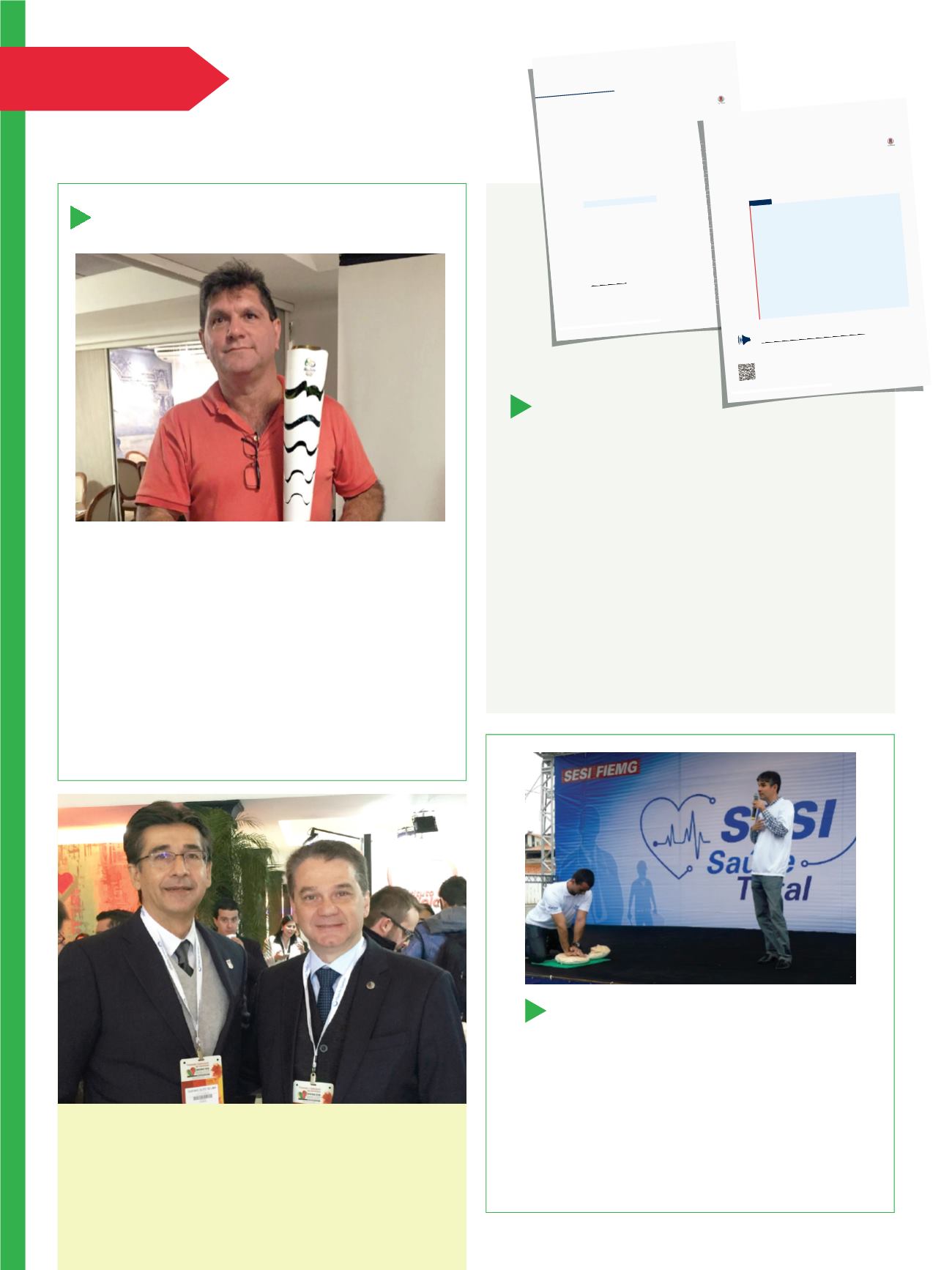
EDITORIALCOMMENT
The Evolution of Contrast Ultrasound
FromDiagnosistoTherapy
*
StevenB.Feinstein,MD
T
hisissueofthe
Journal
featurestheground-
breakingworkofMathiasetal.
(1)
inwhich
they describe the novel use of contrast-
enhanced ultrasound (CEUS)
to restore epicardial
culprit artery patency and reduce microvascular
obstruction,
thereby salvaging myocardial
tissue
andpreservingleftventricular(LV)functioninpa-
tientswithacuteST-segmentelevationmyocardial
infarction(STEMI).Thisstudy,despiteitsrelatively
smallsamplesize,mayheraldafuturetherapeutic
optionforsalvagingmyocardialtissueintheSTEMI
setting.
Tocontextualizetheunique
fi
ndings,itishelpful
tounderstandthedevelopmentofCEUSasanovel,
multifaceted approach to both diagnostic imaging
and therapy. The
fi
rst ultrasound contrast agents
(UCAs)weresuspensionsofmicrobubblescreatedby
manualagitation.Althoughtheseearlymicrobubbles
wererelativelylargeandunstable,theirpotentialuse
asatoolforenhancingadiagnosticultrasound(DUS)
image was
fi
rst observed by Claude Joyner and
reportedintheseminalarticleofGramiakandShah
in 1968
(2)
. Subsequent efforts to stabilize UCAs
and achieve unhindered transpulmonary passage
wereinitiallymetwithskepticism
(3)
.Nonetheless,
continuedresearcheffortsresultedinthedevelop-
mentof
fi
rst-generationcommercialUCAs,including
LevovistandAlbunex.
Early research and development,
in the 1960s
to1980s,focusedonvalidationoftheUCAsastrue
intravascular, nondiffusible indicators, providing a
fi
rm basis
for diagnostic applications. Numerous
clinician/scientists contributed to the pioneering
effort
(4)
.
In time,
the second-generation UCAs offered
improved clinical
diagnostic utility,
given their
increasedreliability,safety,anddiagnosticef
fi
cacy
(5,6)
. These second-generation UCAs, described as
acousticallyactivemicrospheres,werecharacterized
bystabilizedshellsencasinghighmolecularweight,
low-solubilitygases.Theyarenowroutinelyusedfor
diagnosticimaginginavarietyofclinicalsettings.
Currently,third-generationUCAsareinpre-clinical
testing as targeted molecular
imaging agents
(7)
.
Fourth-generation agents are also in development
for
therapeutic use as platform technologies for
targeteddeliveryofnucleicacids
(8
–
14)
.
Currently,theclinicalusesofsecond-generation
UCAsareexpandingandincludecardiovascularand
wholebodyimagingoforgananatomyandmicro-
vascular perfusion. Newer diagnostic
indications
includepediatricurology
(15)
,aswellasimagingof
carotidarteryvasavasorum
(16)
.Asexperiencewith
second-generation UCAs has matured, numerous
international professional societies have endorsed
their use and provided guidelines for diagnostic
applications.
As diagnostic CEUS expands,
therapeutic uses
are now also in development.
Investigators have
recently begun using second-generation UCAs and
sonoporationtofacilitatethesite-speci
fi
cdelivery,
withoutviralmediation,ofnucleicacidsfortreat-
ment of monogenic diseases
(11,14)
and to treat
patients with
pancreatic
adenocarcinoma
(17)
.
Sonoporation induces
localized,
transient
“
pores
”
within thrombi or endothelial cell membranes as
intravascularlycirculatingUCAsareexposedtotar-
getedultrasoundenergy.Atamicroscopiclevel,the
UCAs undergo compression and rarefaction cycles
SEEPAGE2506
*Editorialspublishedinthe
JournaloftheAmericanCollegeofCardiology
re
fl
ecttheviewsoftheauthorsanddonotnecessarilyrepresentthe
viewsof
JACC
ortheAmericanCollegeofCardiology.
FromtheDivisionofCardiology,RushUniversityMedicalCenter,
Chicago,Illinois.Dr.Feinsteinhasreceivedresearchgrantsupportfrom
andservedasaconsultantforGEHealthcare;andisapartownerof
SonoGene,LLC.
JOURNALOFTHEAMERICANCOLLEGEOFCARDIOLOGY
VOL.67,NO.21,2016
ª
2016BYTHEAMERICANCOLLEGEOFCARDIOLOGYFOUNDATION
ISSN0735-1097/$36.00
PUBLISHEDBYELSEVIER
/10.1016/j.jacc.2016.04.004
DownloadedFrom:https://content.onlinejacc.org/byWilsonMathiason05/25/2016
a
c
p
i
d
r
e
o
C
d
m
r
i
r
ot
d
d
,
r
t
c
a
e
e
a
y
r
U
Diagnostic Ultrasound Impulses Improve
Microvascular Flow in Patients With STEMI
Receiving Intravenous Microbubbles
WilsonMathias,J
R
,MD,
a
JeaneM.Tsutsui,MD,
a
BrunoG.Tavares,MD,
a
FengXie,MD,
b
MiguelO.D.Aguiar,MD,
a
DiegoR.Garcia,MD,
a
MucioT.Oliveira,J
R
,MD,
a
AlexandreSoeiro,MD,
a
JoseC.Nicolau,MD,
a
PedroA.Lemos,N
ETO
,MD,
a
CarlosE.Rochitte,MD,
a
JoséA.F.Ramires,MD,
a
RobertoKalil,F
ILHO
,MD,
a
ThomasR.Porter,MD
b
ABSTRACT
BACKGROUND
Pre-clinicaltrialshavedemonstratedthat,duringintravenousmicrobubbleinfusion,highmechanical
index(HMI)impulsesfromadiagnosticultrasound(DUS)transducermightrestoreepicardialandmicrovascular
fl
owin
acuteST-segmentelevationmyocardialinfarction(STEMI).
OBJECTIVES
Thepurposeofthisstudywastotestthesafetyandef
fi
cacyofthisadjunctiveapproachinhumans.
METHODS
FromMay2014throughSeptember2015,patientsarrivingwiththeir
fi
rstSTEMIwererandomizedtoeither
DUSintermittentHMIimpulses(n
¼
20)justpriortoemergentpercutaneouscoronaryintervention(PCI)andforan
additional30minpost-PCI(HMI
þ
PCI),orlowmechanicalindex(LMI)imagingonly(n
¼
10)forperfusionassessments
beforeandafterPCI(LMI
þ
PCI).Allstudieswereconductedduringanintravenousper
fl
utrenlipidmicrosphereinfusion.
Acontrolreferencegroup(n
¼
70)arrivedoutsideofthetimewindowofultrasoundavailabilityandreceivedemergent
PCIalone(PCIonly).InitialepicardialrecanalizationratespriortoemergentPCIandimprovementsinmicrovascular
fl
ow
werecomparedbetweenultrasound-treatedgroups.
RESULTS
Mediandoor-to-dilationtimeswere82
�
26minintheLMI
þ
PCIgroup,72
�
15minintheHMI
þ
PCIgroup,
and103
�
42mininthePCI-onlygroup(p
¼
NS).AngiographicrecanalizationpriortoPCIwasseenin12of20HMI
þ
PCI
patients(60%)comparedwith10%ofLMI
þ
PCIand23%ofPCI-onlypatients(p
¼
0.002).Therewerenodifferencesin
microvascularobstructedsegmentspriortotreatment,butthereweresigni
fi
cantlysmallerproportionsofobstructed
segmentsintheHMI
þ
PCIgroupat1month(p
¼
0.001)andsigni
fi
cantimprovementsinleftventricularejectionfraction
(p
<
0.005).
CONCLUSIONS
HMIimpulsesfromadiagnostictransducer,combinedwithacommercialmicrobubbleinfusion,can
preventmicrovascularobstructionandimprovefunctionaloutcomewhenaddedtothecontemporaryPCImanagementof
acuteSTEMI.(TherapeuticUseofUltrasoundinAcuteCoronaryArteryDisease;
NCT02410330
)(JAmCollCardiol
2016;67:2506
–
15)©2016bytheAmericanCollegeofCardiologyFoundation.
I
tisestimatedthatmorethan1.1millionpatients
intheUnitedStatesaloneweredischargedfrom
hospitalsin2010withthediagnosisofacutecor-
onary syndrome, of whom 813,000 were classi
fi
ed
as having acute myocardial
infarction
(1)
. Current
recanalizationtherapiesinacuteST-segmenteleva-
tion myocardial
infarction (STEMI)
are pharma-
cological
thrombolysis or percutaneous coronary
Fromthe
a
HeartInstitute(InCor),UniversityofSãoPaulo,MedicalSchool,SãoPaulo,Brazil;andthe
b
DepartmentofInternal
Medicine,UniversityofNebraskaMedicalCenter,Omaha,Nebraska.ThisstudywasapprovedbytheClinicsHospitalofthe
UniversityofSãoPauloMedicalSchoolethicscommittee,andreceived
fi
nancialsupportfromtheBraziliangovernmentresearch
agency;FAPESP(FundaçãodeAmparoàPesquisadoEstadodeSãoPaulo);andtheTheodoreF.HubbardFoundationatUNMC.
Dr.Nicolauhasreceivedspeaker/consultinghonorariaand/orresearch/educationalgrantsupportfromAmgen,AstraZeneca,
Bayer,Bristol-MyersSquibb,BoehringerIngelheim,GlaxoSmithKline,Merck,Novartis,P
fi
zer,andSano
fi
.Dr.Porterhasreceived
grantfundingandequipmentsupportfromLantheusMedicalImagingandPhilipsMedicalSystems.Allotherauthorshavere-
portedthattheyhavenorelationshipsrelevanttothecontentsofthispapertodisclose.
ManuscriptreceivedMarch10,2016;acceptedMarch17,2016.
Listentothismanuscript
’
s
audiosummaryby
JACC
Editor-in-Chief
Dr.ValentinFuster.
JOURNALOFTHEAMERICANCOLLEGEOFCARDIOLOGY
VOL.67,NO.21,2016
ª
2016BYTHEAMERICANCOLLEGEOFCARDIOLOGYFOUNDATION
ISSN0735-1097/$36.00
PUBLISHEDBYELSEVIER
/10.1016/j.jacc.2016.03.542
DownloadedFrom:https://content.onlinejacc.org/byWilsonMathias on05/25/2016
JACC destaca em
editorial artigo de
especialistas brasileiros
Taqui News
O representante da Diretoria de Promoção da Saúde
Cardiovascular/Funcor, no Espírito Santo, Antônio Carlos
Avanza Junior, participou de evento com a tocha olímpica,
em Vitória. O símbolo olímpico percorreu oito cidades do
estado, além da capital, e está passando por todo o país. A
viagem por todo o país começou em 3 de maio, emBrasília, e
se encerrará no dia 5 de agosto, quando o último condutor da
tocha acenderá a Pira durante a Cerimônia de Abertura dos
Jogos, no Maracanã. Avanza acaba de ser eleito presidente
do Grupo de Estudos em Cardiologia do Esporte (gestão
2018/2019) e fez avaliação clínico cardiológica de alguns
atletas olímpicos, como a ginasta capixaba, Natália Gaudio.
Representante Funcor
carrega a tocha olímpica
A Sociedade Mineira de Cardiologia participou do
programa Saúde Total do Sesi de Minas Gerais. A
ação foi no ginásio poliesportivo Divino Braga em
Betim e a entidade realizou aferição de pressão,
dosagem de glicemia capilar, distribuição de
folhetos e orientações sobre hipertensão e
diabetes. No palco e na tenda foram feitas
demonstrações das manobras de ressuscitação.
Regional mineira participa de
ação do Sesi
O Congresso da Socergs 2016, realizado em Gramado
de 19 a 21 de maio, contou com a presença de 1.700
especialistas. Na foto, o presidente da Sociedade de
Cardiologia do Estado do Rio Grande do Sul, Gustavo Glotz
de Lima, recebe o presidente da SBC, Marcus Malachias.
O artigo “Diagnostic Ultrasound Impulses Improve
Microvascular Flow in Patients With STEMI Receiving
Intravenous Microbubbles” recebeu elogios no editorial
do
Journal of the
American College of Cardiology
(JACC) na edição de maio. O trabalho foi realizado
pelos brasileiros Wilson Mathias, Jeane Tsutsui, Bruno
Tavares, Miguel Aguiar, Diego Garcia, Mucio Oliveira,
Alexandre Soeiro, José Carlos Nicolau, Pedro Lemos,
Carlos Rochitte, José Antônio Ramires, Roberto Kalil,
ambos do InCor, em São Paulo e pelos especialistas da
Universidade de Nebraska, nos Estados Unidos, Feng
Xie e Thomas Porter.
24


